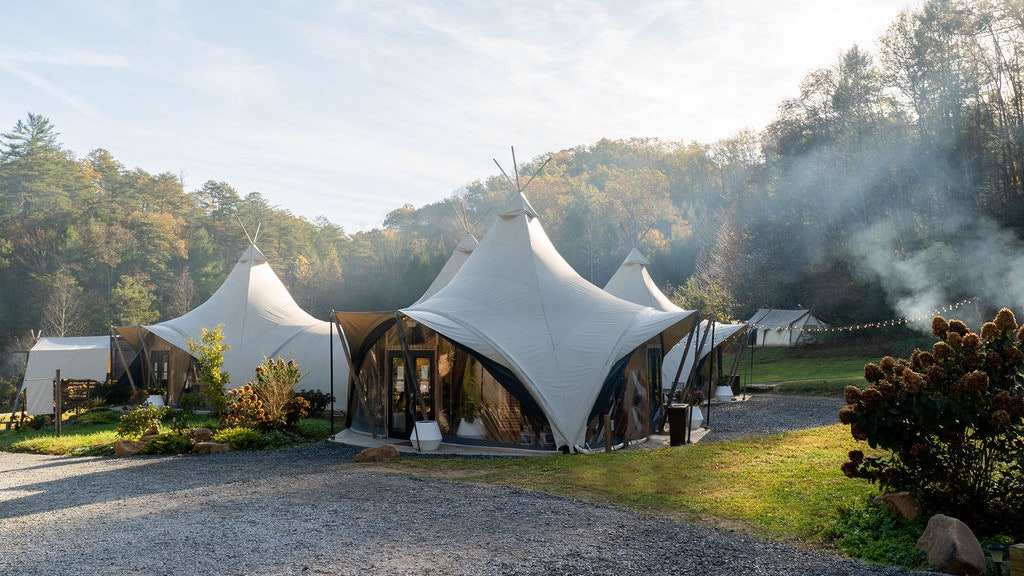Exploring the Majestic Beauty of Great Smoky Mountains National Park
There’s something magical about standing amidst the misty blue ridges of the Great Smoky Mountains. As someone who’s spent countless seasons hiking these ancient trails and documenting their wonders, I can tell you that numbers alone barely scratch the surface of this remarkable place.
Yet those numbers are indeed staggering: 522,427 acres of protected wilderness, 16 peaks towering above 6,000 feet, an impressive 848 miles of hiking trails, and a biodiversity that houses nearly 23,000 different species. This extraordinary concentration of life makes the Smokies not just America’s most visited national park, but also a UNESCO World Heritage Site.
A Natural Wonder By The Numbers
When I first began exploring the Smokies years ago, I was overwhelmed by its sheer scale. This isn’t just a park – it’s an entire ecosystem that straddles the Tennessee-North Carolina border with a grandeur that takes your breath away.
The park’s statistics tell a compelling story:
| Feature | Measurement |
|---|---|
| Total Area | 522,427 acres |
| Peaks Above 6,000 ft | 16 mountains |
| Hiking Trails | 848 miles |
| Species Documented | Nearly 23,000 |
But trust me when I say that hiking through a rhododendron tunnel in full bloom or watching the morning mist lift from Clingmans Dome transcends any statistic.
Biodiversity That Boggles the Mind
I’ll never forget my first salamander spotting in the Smokies. This park is known as the “Salamander Capital of the World,” home to more than 30 species of these fascinating amphibians. It’s just one example of why biologists consider this region a living laboratory.
The park’s varied elevations create distinct habitats that support:
- Over 1,600 flowering plant species
- More than 200 bird species
- Approximately 67 native fish species
- One of the world’s best examples of temperate deciduous forest
During my spring hikes, I’ve counted dozens of wildflower varieties along just a single trail. The diversity here is simply astounding.
Trails for Every Explorer
With 848 miles of trails, the Smokies offer something for everyone. I’ve taken first-time hikers along the gentle Laurel Falls path and challenged seasoned trekkers with the steep climb to Mount LeConte.
Some trails I recommend for different experience levels:
- Beginner: Cataract Falls, Porters Creek, Sugarlands Valley
- Intermediate: Alum Cave, Chimney Tops, Abrams Falls
- Advanced: Mount Cammerer, Ramsey Cascades, Rocky Top
My personal favorite? The Charlies Bunion trek along the Appalachian Trail, where jaw-dropping vistas reward your efforts at nearly every turn.
Seasons of Splendor
Each season transforms the Smokies in distinctive ways:
Spring’s Renewal
Springtime brings an explosion of wildflowers – trilliums, lady slippers, and phacelia carpet the forest floor. I’ve spent entire days photographing these ephemeral blooms before they disappear.
Summer’s Lush Canopy
Summer delivers cool mountain streams perfect for wading after a warm hike. The canopy thickens, creating shaded retreats even on the hottest days. Wildlife sightings increase, especially at dawn and dusk.
Fall’s Fiery Display
Fall foliage in the Smokies? Nothing compares. The tapestry of crimson, orange, and gold spreading across these ancient mountains has left me speechless more times than I can count. Mid-October typically offers peak colors, but the show extends from September through early November across different elevations.
Winter’s Quiet Solitude
Winter reveals the park’s bones – stone foundations of former settlements emerge from leafless woods, and icy waterfalls create spectacular natural sculptures. The crowds thin, offering solitude rarely found during warmer months.
Planning Your Smoky Mountains Adventure
If you’re considering a visit (and you absolutely should), here are some insider tips I’ve gathered over years of exploration:
- Avoid summer weekends and October weekends if possible – that’s when crowds peak
- Enter the park early (before 9am) or later (after 5pm) to avoid traffic congestion
- Download trail maps before arriving as cell service is limited within the park
- Pack layers regardless of season – mountain weather can change rapidly
- Bring binoculars for wildlife viewing, especially in Cades Cove
Whether you’re captivated by rushing waterfalls, eager to spot black bears in their natural habitat, or simply yearning to stand atop mountains that predate human history, the Great Smokies await with experiences that will become cherished memories.
Preserving This Natural Treasure
As I’ve witnessed firsthand, increasing visitation brings both opportunities and challenges. The park now welcomes over 12 million visitors annually, putting pressure on its natural systems and infrastructure.
Consider supporting the Friends of the Smokies or participating in volunteer programs during your visit. These mountains have given me countless moments of joy and wonder – they deserve our protection for generations to come.
The ancient Cherokee called these mountains “Shaconage” – place of blue smoke. Once you’ve experienced the mystical fog that gives the Smokies their name, you’ll understand why these mountains have captivated human hearts for thousands of years.
I hope to cross paths with you on a misty mountain trail sometime soon!

